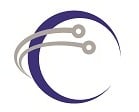From baristas to grocery clerks, waiters to clothing salespeople, hourly retail employees are an essential part of countless companies. In fact, about five million Americans work retail jobs.
However, these essential jobs also suffer the highest turnover rates, at 65 percent. Employee turnover is the rate at which employees leave a company and have to be replaced. It is a costly process in terms of both time and money. Recruiting, advertising, interviewing, background checks, and training mean replacing a minimum wage retail employee costs an average of three thousand dollars.
It’s no mystery why employee turnover is so high. Surveys and research consistently show that retail employees want two things: flexibility and predictability.

Over half of all employees want more flexibility in their work schedules. In fact, retail employees value flexibility over every other benefit—including pay!
There are a lot of misconceptions about flexibility in retail. An employee has to be there to open the store at a certain time in the morning, all locations need enough salespeople on the floor, team members can’t just take off whenever they feel like it. These arguments are used against flexibility, but they ironically approach the idea of workplace flexibility with a rigid definition of what it means.
While there are some jobs that offer employees the ability to work whenever they want, these are usually situations where employees work remote and are not customer facing—such as writers or web developers. This is the far end of the flexibility spectrum. By pointing at the most extreme examples of schedule flexibility and saying, “Flexibility doesn’t work in retail!” companies betray how little they know about how flexibility fits into the modern workplace. Remember, we have technology now.
The phrase ‘digital transformation’ has been used so often in recent years that it’s bordering on becoming a buzzword. However, when used correctly, it simply points to how modern technology is revolutionizing industries across the globe.
“Digital transformation is the application of digital technologies to fundamentally impact all aspects of business and society.” – Galen Gruman, Executive Editor of InfoWorld
When we say “we can’t” what we really mean is “we can’t…right now.” Not at this moment, in this year, or in this decade perhaps. But with the exponential progress of technology that we are experiencing, things that are an impossibility today may become a reality tomorrow. Unfortunately, things usually become technologically possible long before people start believing they are possible.
Retail flexibility is the perfect example of this. The retail sector still looks at their business the way things used to work, where managers created a schedule on paper or Excel and each employee was given a set time to work, which was only changed if an employee called in sick.
That was yesterday. In today’s world, we can change all that.
Before delving into how technology makes flexibility possible, let’s take a quick side journey. Remember the second thing employees want? Predictability.
If you have worked a retail job, then you know what we are talking about. We are talking about the store where schedules are sent out the day before, where shifts are constantly being filled last minute, and where you can never plan anything in your life more than a week in advance. In one study nearly half of employees could not anticipate when they would be working week to week, with 45 percent agreement that last-minute changes to their work schedules occurred frequently. This is depicted as the harsh reality of retail life, but it doesn’t have to be this way.
Let’s look at why most stores are run this way:
· Schedules are sent out late because managers lack the time to manually draw up worker schedules.
· Shifts are constantly being filled last minute because employees lack an effective way to switch shifts with each other.
· Employees cannot plan their lives more than a week in advance, because they are waiting around for their managers to create and send out schedules.
These are typical problems in the retail industry and are easy to brush off as ‘a part of life’ by team leaders and corporate management. Yet these are the exact reasons that employees leave a company to look for greener pastures. With it impossible to schedule doctor appointments, plan child care, and rely on a steady paycheck, it is not surprising that employee turnover rates are so high. On the bright side, similar to the issues surrounding flexibility, all of these problems can be resolved with the help of emerging technology. Specifically, workforce management/scheduling tools.
First, schedules were organized on paper. Then they were created in Excel. Today, some companies might have a Google Doc or online portal; something only the manager can change, but all employees can view.
These are all iterations of the same scheduling model. The manager creates a schedule, the employees follow it. Not only is this method time consuming for managers—store managers tend to spend over three hours a week handling schedules—it gives employees zero ownership over when they work.
Perhaps when team members are hired they are asked which shifts they would prefer. However, employee preferences are often forgotten or ignored. On top of that, there is no way for employees to update their preferences with any frequency.
We get it! Being a store manager is difficult enough without struggling to incorporate every employee’s personal preferences. Finding a schedule that fills all shifts is considered a success. Searching for a schedule that fills all shifts and fulfills the maximum number of employee shift requests is a ludicrous pipedream—or at least, it was.

Today’s workforce scheduling tools are intelligent. Imagine plugging a new hire into a system, marking the times they want to work, and watching a tool create an optimal schedule in seconds. Only an intelligent machine can take dozens of employee’s preferences, look at all possible schedules, and produce the schedule that is truly optimized to fulfill as many employee requests as possible.
When scheduling is optimized in this way, employee preferences are no longer an extra burden for employees to bear. They’re actually an asset that can be leveraged to boost satisfaction and lower employee churn. Plus, strong workforce management tools allow employees to log into an app and adjust shift preferences themselves, taking yet another burden off managers’ shoulders and giving employees ownership over their own schedule. The best workforce management tools also take labor laws and company policies into account, ensuring all rosters remain compliant.
Think about how much time you or your managers spend drawing up schedules. With a workforce management tool, those hours can be condensed down to seconds, allowing managers to work on other tasks. And when creating schedules only takes seconds, managers can send out shifts weeks in advance instead of scrambling at the last minute.
One reason managers choose to send shifts out one week at a time is that too much can change. Employees request time off and call in sick, plus sales volume may increase or decrease, changing the number of employees the manager decides to schedule each day. What is the point of creating a schedule a month ahead of time if every week it will need to be updated and sent out again?
Unlike Excel or paper, intelligent workforce scheduling tools were created to handle real-time changes. For instance, Legion allows managers to determine how many employees can be approved for time off per day. Then, when an employee requests time off, the program either approves it and adjusts the company schedule automatically, or denies it if the maximum number of employees have already signed up to take time off that day. Since the calendar is a live document that employees can access via an app, these little changes are painless and no longer another item on managers’ to-do lists.
Workforce management tools also allow employees to proactively swap shifts between themselves. With Legion, team members may request to swap a shift with a specific individual. Once the other employee confirms, the schedule is updated and the manager receives a notification alerting them to the change. A second option within Legion is a general swap request, where employees receive an alert asking if they want to trade shifts with the individual in need. Again, the entire process is resolved without the store manager having to get involved.

It’s important to note that good workforce scheduling tools will keep labor laws and employer policies in mind, and be able to flag or deny swaps that are not compliant.
All of the features we have discussed mean that any retail company can give their employees a little more flexibility, predictability, and ownership over their schedules. With over 80 percent of millennials saying they would be more likely to stay with their current job if they were given more control over their work schedule, this is clearly an essential aspect of lowering employee turnover.
For companies wanting to take the next step, look for a workforce management tool that supports multiple tiers. Retail employees are most frequently divided into full-time (working a set number of hours a week and receiving benefits in return) and part-time (working fewer hours and receiving no benefits).
With a robust workforce scheduling tool, companies can now go behold the standard full-time or part-time designations and offer additional perks for employees willing to commit to certain hours. For instance, employees that commit to thirty-hour weeks can be enticed with partial benefits.
If you are a retail employee, we expect you are fully on board with modern workforce scheduling tools by this point. More flexibility and predictability? Automation that saves your manager time and stress? Yes, please!
Still, this change cannot happen without management getting onboard. That means digging into the return on investment (ROI) they can expect if they invest in a workforce management tool.
Recall how replacing a minimum wage retail employee costs over three thousand dollars? Well, a Harvard Business Review survey showed 83 percent of workers would be more likely to stay in their current job if they had more control over their schedules.
Increased flexibility and predictability increase employee satisfaction and loyalty. Customers of Legion saw employee schedule satisfaction jump 53 percent. Even ignoring the effect this would have on lowering employee churn, consider that the University of Warwick found that happier employees are 12 percent more productive. Overall, customers that implemented Legion saved approximately 35 thousand dollars per location, per year.
Then there is the fact that managers spend three hours a week managing schedules. That’s seven percent of the workweek, time that could be saved with scheduling automation.
In a case study by The Gap and Slate, an experiment was conducted where a number of Gap stores took steps to increase flexibility, improve predictability, and implement an app where employees could trade shifts. At the end of the case study, employees were happier, sales had increased by seven percent, and labor productivity saw a boost of five percent. Not only was it possible to offer employees more control over their schedules, it was in the company’s self-interest.
At the end of the experiment, Slate summarized our point quite nicely.
“These workers aren’t asking for the option to work from home or for unlimited snacks. What they need is for their employers to realize that they have lives outside of work that they need to plan for and pay for. And if employers do, they will reap the benefits of having a happier, more stable, and more productive workforce.” – Slate

Posted by PDI Marketing Team
Pacific Data Integrators Offers Unique Data Solutions Leveraging AI/ML, Large Language Models (Open AI: GPT-4, Meta: Llama2, Databricks: Dolly), Cloud, Data Management and Analytics Technologies, Helping Leading Organizations Solve Their Critical Business Challenges, Drive Data Driven Insights, Improve Decision-Making, and Achieve Business Objectives.



